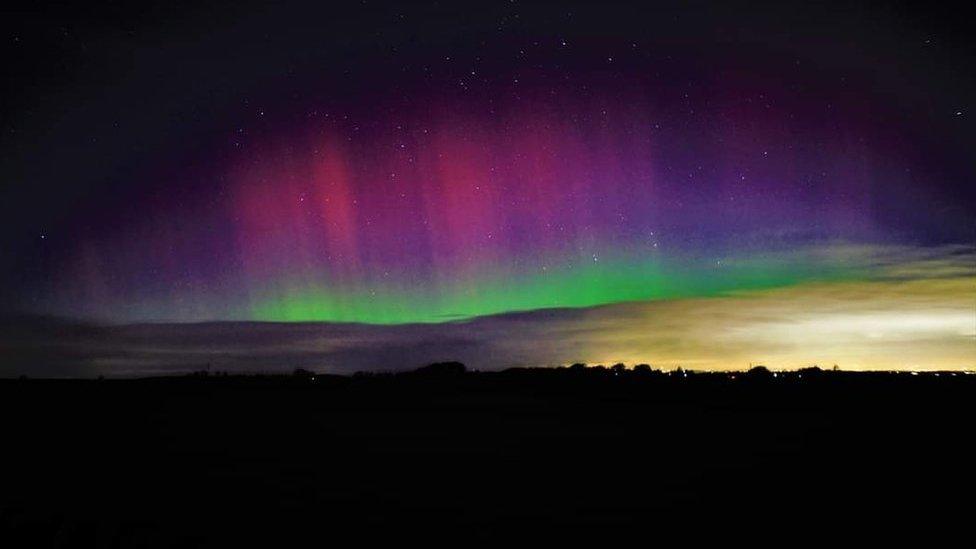Unusually vivid Southern Lights glow over New Zealand
- Published
The Southern Lights, or Aurora Australis, have been particularly vivid this season across New Zealand.
Night skies erupting with green and pink light streams have entranced aurora hunters, with many staying up all night to get the perfect shot.
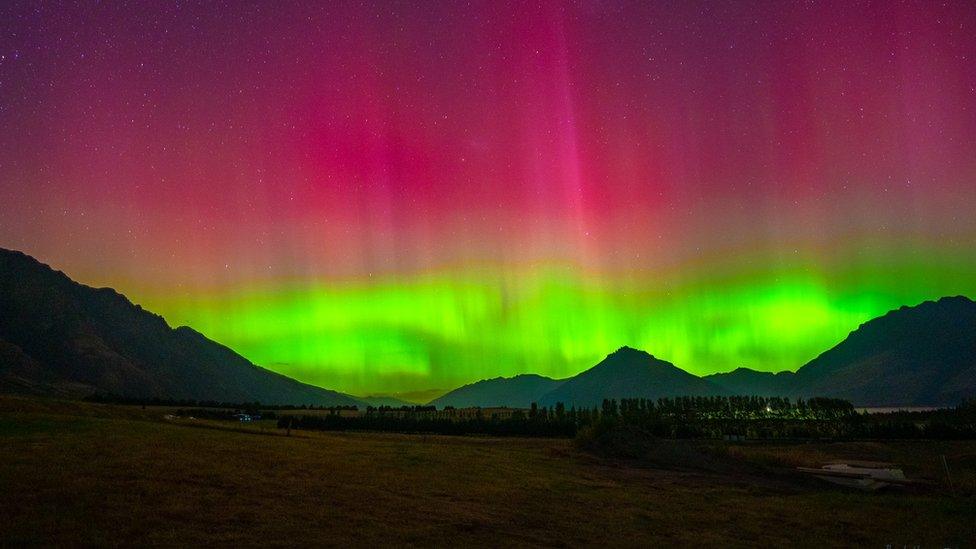
An aurora, seen on 28 February, illuminates the mountains of Queenstown in New Zealand.
Richard Zheng, an observer relatively new to the scene, camped out at Brighton Beach in Dunedin this week to take pictures. He said the intensity of the southern lights had grown "stronger and stronger" compared to last year.
"Faced with such a scene, you can instantly forget all your troubles, and only lament the insignificance of human beings in front of nature," Mr Zheng told the BBC.
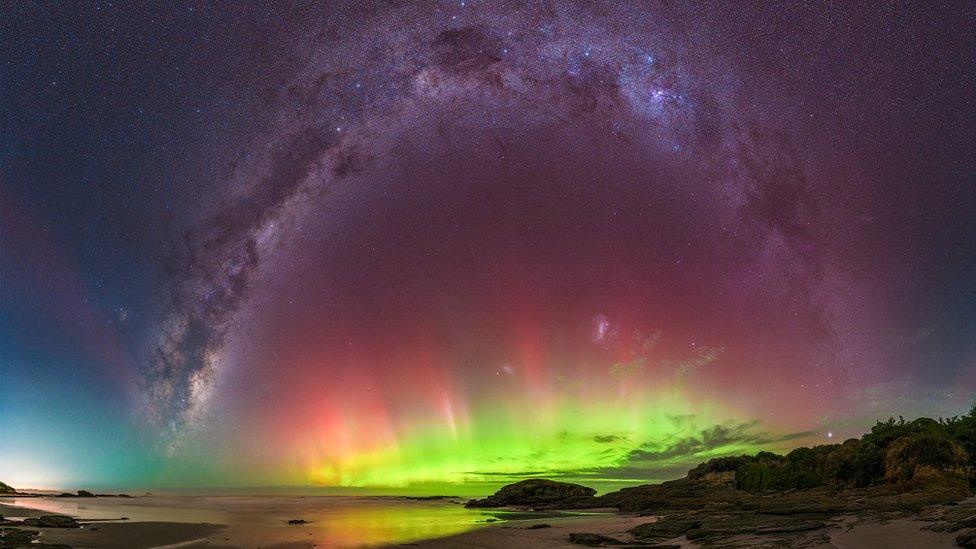
One of Mr Zheng's pictures of the aurora seen on 24 March in Dunedin in New Zealand's South Island
The Southern (and Northern) Lights can be seen around the magnetic poles when the upper atmosphere is hit by energetic charged particles that travel along the Earth's magnetic field lines.
When those energetic electrons collide with gases in the atmosphere, they emit light.
In the northern hemisphere, the phenomenon is called Aurora Borealis. In the south, it's referred to as Aurora Australis.
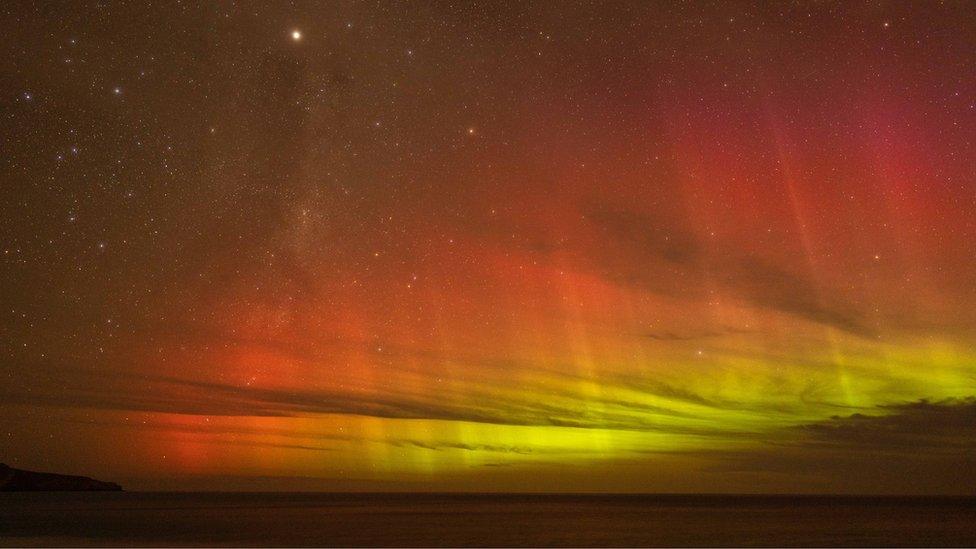
The horizon over Christchurch, New Zealand bathed in a warm yellow and orange glow on 28 March
Auroras are typically visible this time of the year across Australia and New Zealand's southern areas. There was a particularly intense show last Friday night local time.
But watchers say the lights have been so bright this year they've even been witnessed further north.

Electric pink and green hues over Selwyn Lake in New Zealand's Canterbury region on 24 March
Since moving to New Zealand's South Island last year, Dan Dirks said he had been monitoring aurora forecasts in hope of ticking off a sight on his bucket list.
"My camera captured the aurora in all it's glory. Mission accomplished!" he said.
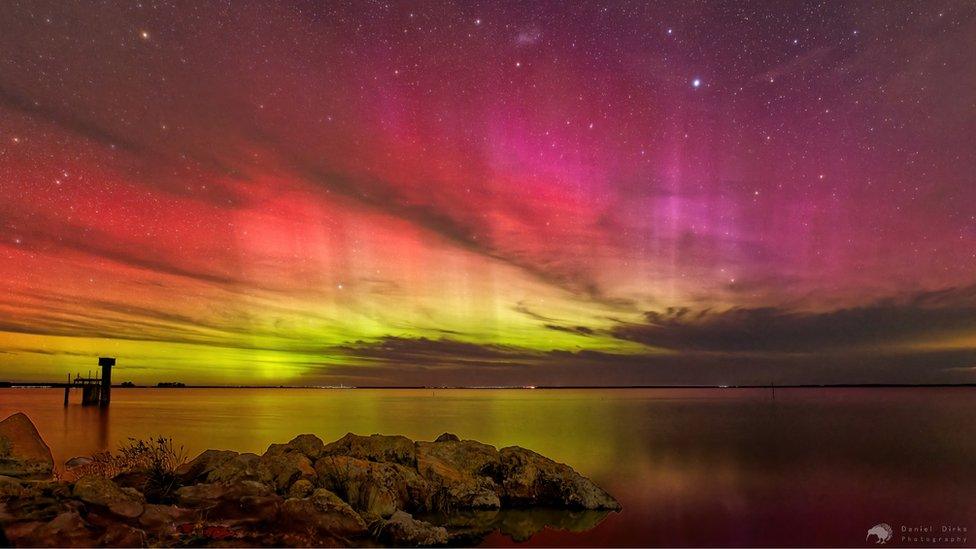
Mr Dirks' picture of an aurora last Friday over New Zealand's Lake Ellesmere
Although auroras can happen at anytime, they are most likely to appear in March and September when Earth's orientation relative to the sun is more likely to interact with solar storms, the Australian Space Weather Forecasting Centre says.
The shades of an aurora are determined by the atmosphere's composition. More oxygen in the air produces greens and yellows while more nitrogen makes an aurora look dark red or blue.
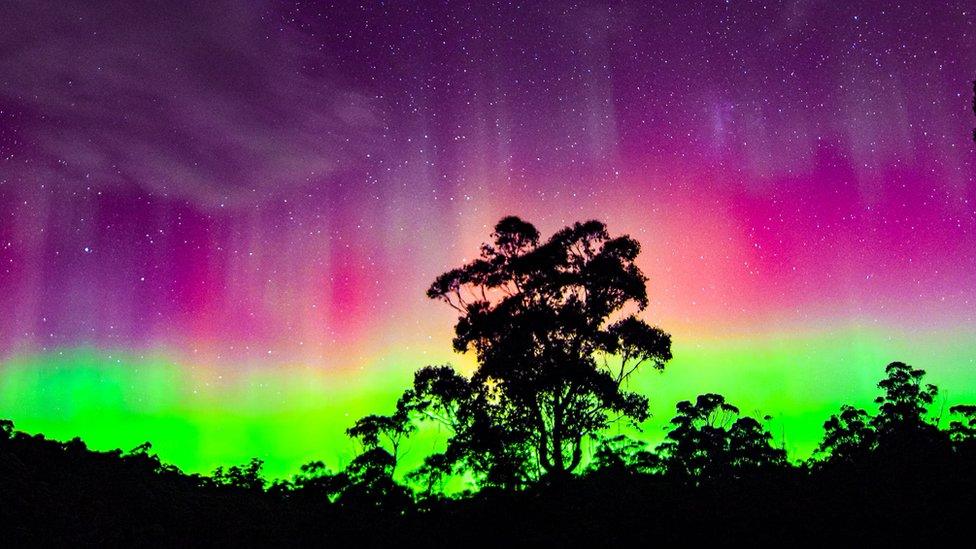
A vivid purple and green vision over Strathblane, in the Australian state of Tasmania on 24 March
On a clear night, the natural light show can last for one to three hours. The phenomenon typically appear between 22:00 and 02:00.
For aurora-chasing photographers, scientists recommend setting up in a dark location with a view southwards, perhaps on a hill or on a beach.
In the northern hemisphere, bright auroras were also recently spotted across Europe.
All images subject to copyright.
Related topics
- Published27 February 2023
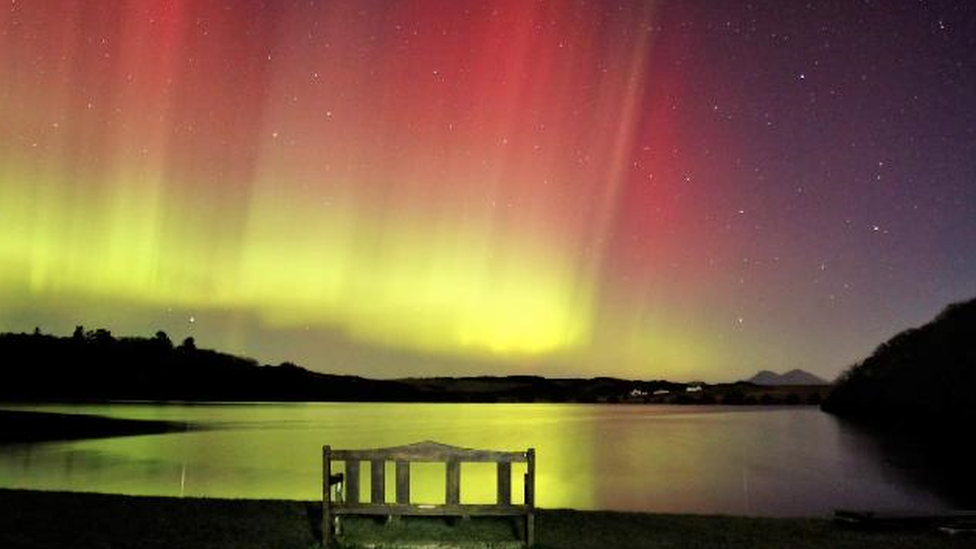
- Published24 March 2023

- Published4 March 2023
